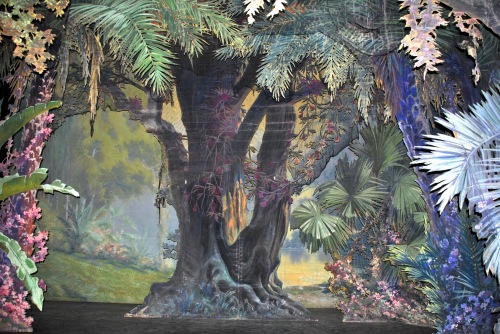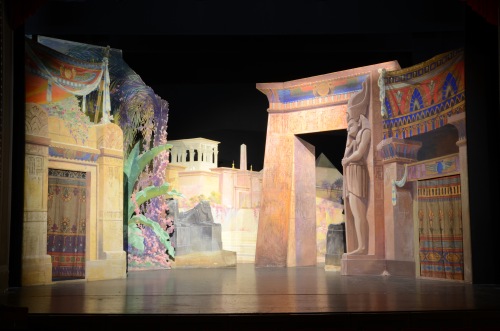The newly discovered scenic collection of the Stadsschouwburg in Kortrijk, Belgium, comprises 13 backcloths, 21 borders, and over 298 framed units, plus authentic stage furniture, practicables, and sound effects.
This forgotten treasury houses a near-complete set of generic stock sets next to genuine production materials for Aida, La bohème, Carmen, Faust, and other blockbusters from the operatic repertoire. The décors were designed and executed by Albert Dubosq (1863–1940), an acknowledged master of the Parisian school of scenic painting,
Despite the groundbreaking research done at a few historical theaters, the study of operatic iconography still tends to focus on visual renderings—designs, artists’ impressions, and photographs—rather than on primary, scenic artifacts thereof, such as flats and drops. The discovery of these valuable holdings allows new examples of authentic scenery to be subjected to scholarly scrutiny.
This according to “Jumbo-sized artifacts of operatic practice: The opportunities and challenges of historical stage sets” by Bruno Forment (Music in art XXXVIII/1–2 [2013] pp. 115–125. Above, Dubosq’s Forêt asiatique for Lakmé; below, his Extérieur égyptien for Aida (both from 1921).
Related articles:




